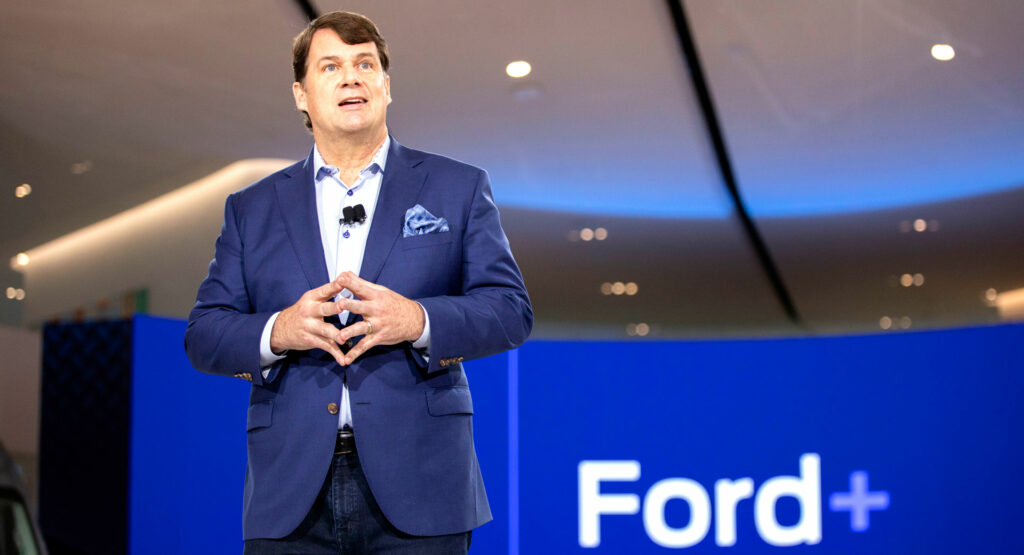Ford CEO Jim Farley thinks that big changes are coming to the industry and to the way it operates as the industry shift increasingly towards electric vehicles. Specifically, he believes that the dealer model will have to change.
“We’ve got to go to non-negotiated price. We’ve got to go to 100% online. There’s no inventory (at dealerships), it goes directly to the customer. And 100% remote pickup and delivery,” said Farley during Bernstein’s 38th Annual Strategic Decisions Conference recently. “I think our dealers can do it. But the standards are going to be brutal. They’re going to be very different than they are today.”
The CEO praised Tesla and Chinese automakers for their approach to sales because keeping fewer cars on dealer lots could save the Ford a considerable amount of money. The automaker estimates that its distribution model costs about $2,000 more per vehicle than Tesla’s non-dealer approach. It says that two-thirds of that are spent on inventory sitting on dealer lots and public advertising, reports the Detroit Free Press.
Read Also: Jay Leno Experiences The F-150 Lightning With Ford CEO Jim Farley
Farley was particularly opposed to advertising, pointing to the fact that sales and reservations for the F-150 Lightning and the Mustang Mach-E happened without major advertising campaigns. The key, he said, is building loyalty among its current customers, not spending money on Super Bowl ads.
“If you ever see Ford Motor Co. doing a Super Bowl ad on our electric vehicles, sell the stock,” said Farley.
That doesn’t mean that dealers are completely obsolete. The company is working with its network to focus on specialized services. Citing retail giant Target, Farley pointed out that the company used its brick-and-mortar stores to expand in-person services for customers while also incorporating a digital element to compete with the likes of Amazon.
“Our model is messed up,” said Farley. “We spend $600 or $700 on the vehicle to promote it and we spend nothing post-warranty on the customer experience.”
To remedy that, the company should focus on providing customers with a good experience by helping them through software updates, giving complimentary detailing, and offering other services. It’s a model inspired by Tesla’s approach to Norway where it maintains a dealer network, unlike in North America. That’s because customers there want services not just sales.
Future success, though, will also require Ford to get it right the first time and reduce its spending on defect repairs. Farley said the company has to be “radical on [its] quality” and also reduce the prices of batteries. All of which will require that the company hire top talent from the likes of Apple and Tesla “even if they make 10 times what I do,” the CEO added.
But the focus won’t be entirely on EVs. Even if that’s the way forward, Ford still has to focus on what makes it money now.
“If you’re a Super Duty customer towing 10,000 pounds in Montana or on the north slope of Alaska,” he said. “An electric vehicle is an awful solution, the batteries are too heavy.”
That means that, although Ford is spending billions on its electric future, it will continue to invest in internal combustion engines to ensure that it can continue to serve a customer base that generates huge profits for it now.






